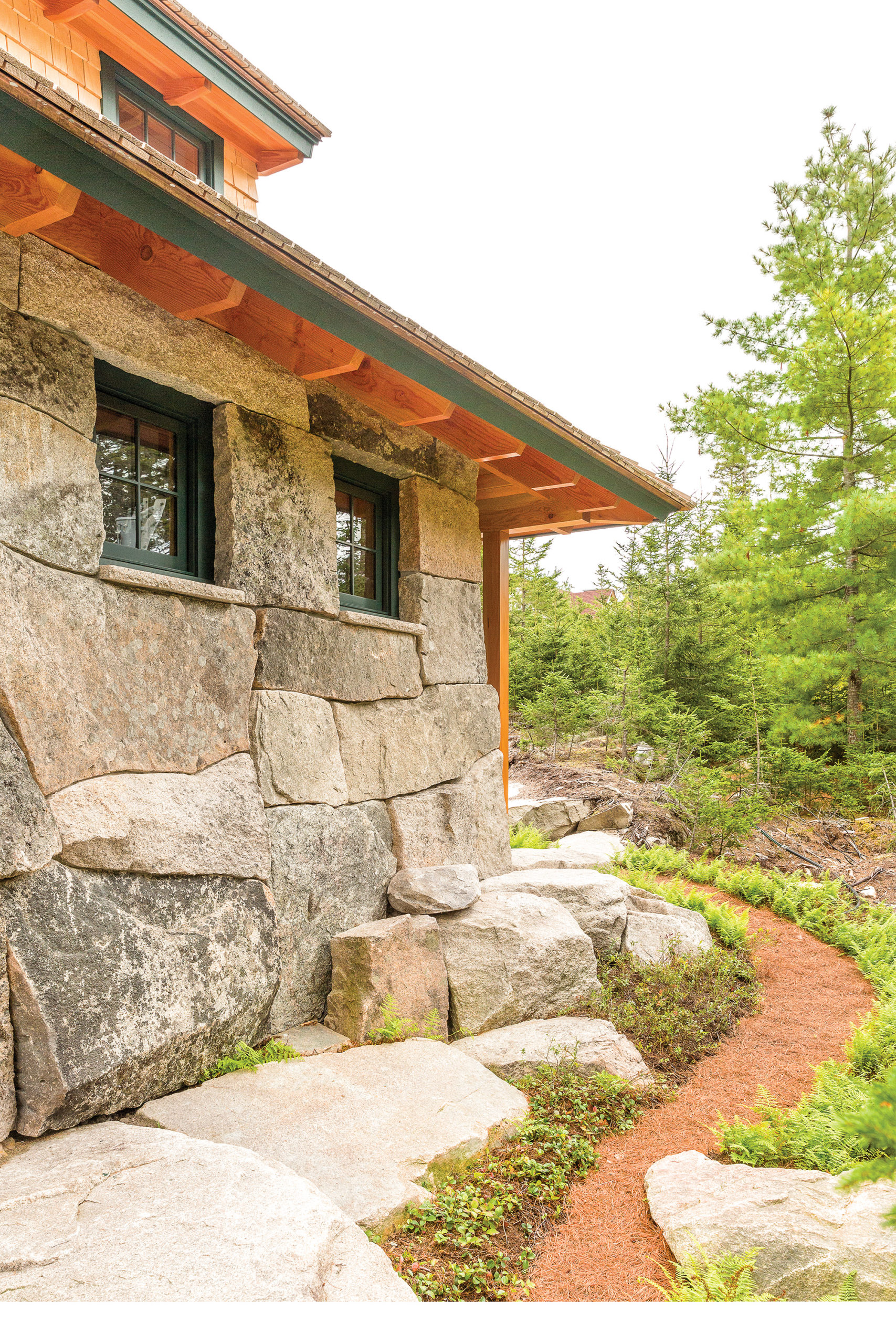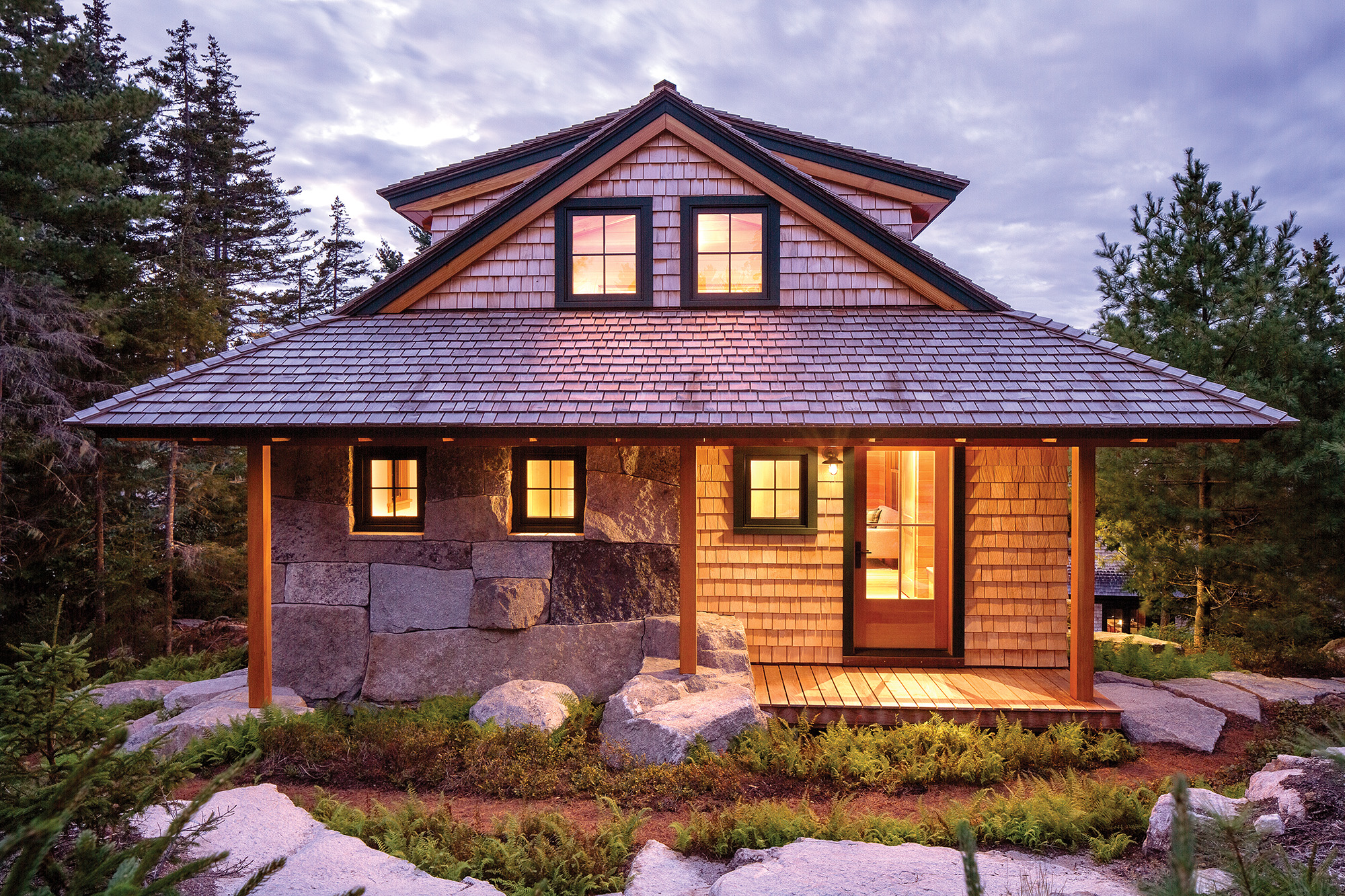A passion for sailing led Michael Cook and his wife to their waterfront property in Southwest Harbor, Maine, in 2002.
But an enduring love for boatbuilding led them to the design of their new carriage house there.
“He’s an avid sailor who appreciates craft and detail,” says Eric Sokol, a designer with Winkelman Architecture in Portland, Maine, about his client. “The woodwork inside and the stonework outside may not be necessary—but in the end, he appreciated the nature of that craftsmanship.”
The carriage house is a stone’s throw from the residence that the couple built on the ocean in 2009, after they tore down a less-than-desirable older house. “The new home’s size was restricted because the entire footprint couldn’t be larger than what was there,” Cook says. “We could only get three bedrooms and an office in it, so with two kids, there was no room for guests.”


A compact carriage house seemed the perfect solution. So two years ago the couple hired Sokol to design a two-car garage with an 850-square-foot apartment above. “There’s a small office–but it was built as a place for guests, or when children come and need a place to stay,” Cook says.
There’s an open floor plan with built-ins, a kitchenette and excellent views, plus a second-floor loft with a tiny pair of dormers. Almost all the interior walls, floors, and ceilings were executed deftly in Douglas fir imported from New Brunswick on Canada’s West Coast. Outside, the shingles are Alaskan yellow cedar from British Columbia. “It’s beautiful stuff,” he says.
The designer who spec’d the shingles for their endurance and their aesthetic appeal agrees. “It’s a special order—you can’t just go to the lumberyard and pick it up,” Sokol says. “These shingles are thicker with a lot more wood, and that helps them hold in place and last longer—they’re visually heavier and look a lot more pronounced, especially when they’re seen on the roof.”
Cook, Sokol, and builder John Dargis called on masons from Freshwater Stone in nearby Orland to execute their vision for the little structure’s exterior oversized stone walls, carved from Hall Quarry Pink Granite. The Freshwater artisans looked at the way that the bedrock naturally lies on the property, then mimicked it. “There are fissures on the site that distinguish granite formations in the area,” says Jeff Gammelin, who founded Freshwater in 1973. “That’s where we got our inspiration.”
Sokol drew up patterns for the stonework’s scale, size, and shape. Then Freshwater’s masons picked out stones to match. “The outcome is very tailored and fitted,” the designer says. “They have equipment to fit it in the shop, which is not the way you’d do it on site in 30-degree weather.”
Construction was not without its challenges—beginning with blasting a wedge in the bedrock to lay the foundation. “We’d been thinking about doing this for six or seven years, but the idea of blowing all this up bothered me,” Cook says. “I didn’t want the destruction of the property.”
Finally, in February of 2017, demolition experts suggested a series of small blasts, rather than a single big one. It cost more to create the foundation and utility channels that way, but Cook agreed. “These guys were like surgeons,” he says.
The wedge was feet 24 wide and 28 feet long—enough for the two-bay garage below grade, with the guest accommodations above. Exterior walls start at ground level with five- to seven-foot thick granite boulders selected from the site, then matching it with similar stone from a nearby quarry atop. “We can cut the stone to whatever size and shape we need,” Gammelin says. “We can make it 24 or 18 inches thick.”
The size of the stones mitigate the height of the carriage house and makes it look as small as possible from the outside. “It’s a tiny thing, so it’s about the craft of it—the materials used and how well it was put together,” Sokol says.
And its joints meander like the nearby bedrock. That’s an artisan’s touch, one that taps into both the art and the science of building.
But then again, isn’t that what these sailboat-loving clients are all about?
For more information, visit winkarch.com.


